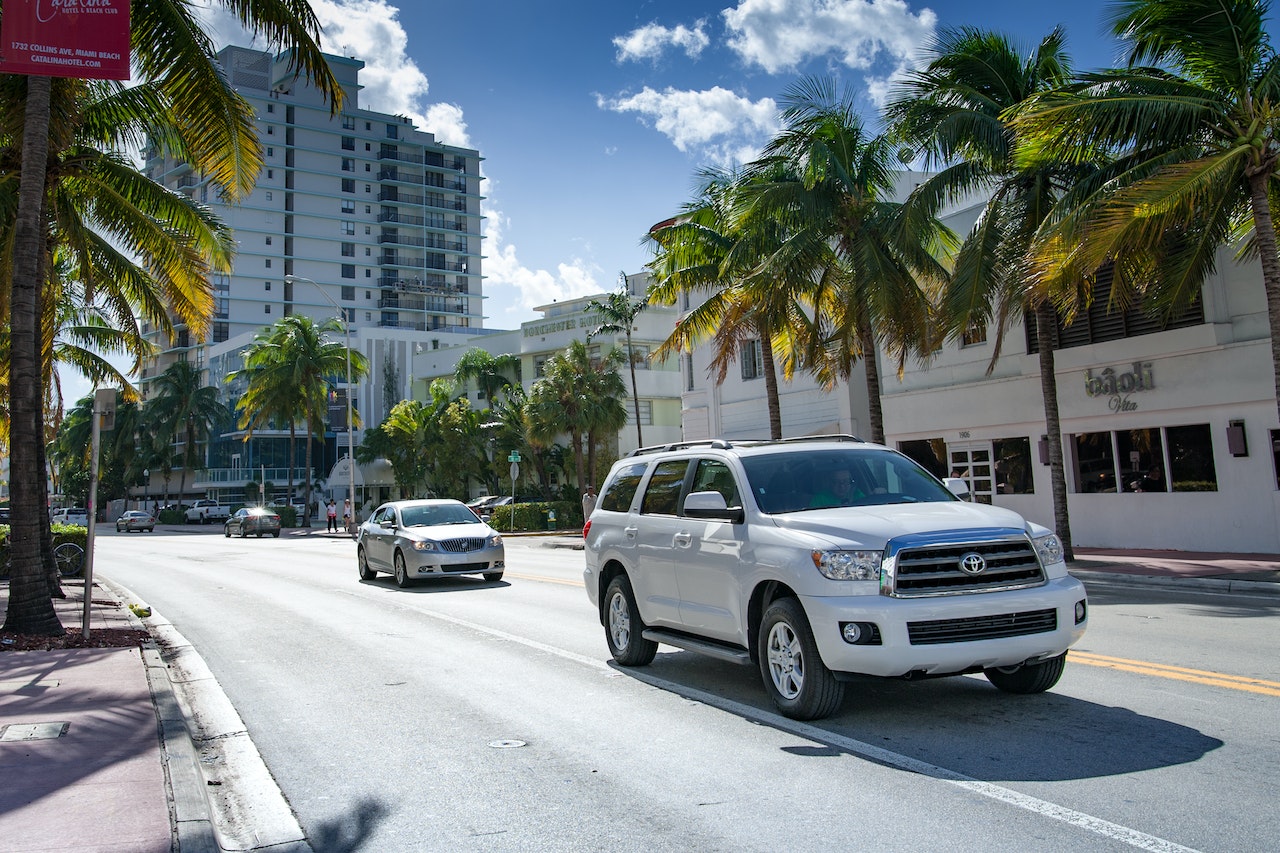

In recent years, the allure of Sports Utility Vehicles (SUVs) has captivated the automotive world. With their imposing stature, enhanced cargo space, and elevated seating, it’s no wonder they’ve become a favorite among many drivers.
Driving an SUV is not just about enjoying its luxurious amenities; it also demands an understanding of its distinct dynamics. Due to their unique design and weight distribution, SUVs can present challenges that are different from those of smaller vehicles.
Therefore, mastering defensive driving techniques becomes not just beneficial but essential for the safety of both the driver and others on the road. This article aims to equip SUV drivers with techniques to navigate roads more safely, ensuring that every journey ends as smoothly as it began.


Driving an SUV, with its heightened center of gravity, presents distinct challenges. Their size requires longer braking distances, urging drivers to maintain adequate space from other vehicles.
Despite offering a commanding road view, SUVs have significant blind spots, necessitating regular mirror and over-shoulder checks. Moreover, their weight can alter acceleration dynamics, even with powerful engines.
Recognizing these unique SUV characteristics is paramount. It’s not about spotlighting limitations but adapting one’s driving approach, ensuring safety on the roads for everyone.
Driving defensively is a proactive approach, focusing on anticipating potential hazards rather than merely reacting to them. While these principles apply to all vehicles, they are especially crucial for SUV drivers given the vehicle’s unique dynamics:
Incorporating these defensive driving techniques can significantly reduce the likelihood of accidents, ensuring safer journeys for SUV drivers and fellow road users.
While basic defensive driving principles lay the foundation for road safety, mastering SUV-specific techniques can further enhance your ability to tackle challenging situations with confidence:
Weather plays a pivotal role in driving dynamics, and when piloting an SUV, adapting to these conditions becomes even more paramount. On wet roads, SUVs, due to their weight, might be prone to hydroplaning. It’s essential to reduce speed and avoid sudden braking to maintain control.
In snowy or icy conditions, the weight of an SUV can be both a boon, providing traction, and a challenge, increasing stopping distances. Thus, using winter tires, engaging 4WD or AWD systems, and driving at reduced speeds can be crucial.
Moreover, high-profile vehicles like SUVs can be particularly affected by strong crosswinds, necessitating a firm grip on the steering wheel and lowered speeds. Utilizing technology, such as traction control, can further assist in ensuring stability. Being attuned to weather variations and understanding how they interact with an SUV’s unique characteristics is the key to safe and proficient driving.
In our modern age, technology has become an integral part of the driving experience, especially in larger vehicles like SUVs. However, while it serves as a valuable aid, it’s essential to understand its capacities and limits.
Despite our best efforts and precautions, emergency situations on the road are sometimes inevitable. For SUV drivers, handling these scenarios effectively can mean the difference between a near-miss and a potentially severe accident.
Tire blowouts, a common emergency with heavier vehicles, require calm steering and gradual deceleration instead of abrupt braking. Similarly, if an SUV begins to skid, especially on wet or icy surfaces, it’s crucial to steer in the direction of the skid and avoid sudden brake application.
Unexpected obstacles might also necessitate evasive maneuvers. In such situations, understanding the SUV’s weight dynamics is essential to prevent rollovers or loss of control. Furthermore, if faced with potential collisions, the adaptive safety features of modern SUVs, like emergency braking, can prove invaluable.
However, it’s the driver’s presence of mind, combined with practiced defensive techniques, that plays the most significant role in safely navigating emergencies. Being prepared and understanding the SUV’s responses can turn potential crises into manageable situations.
The rise in SUV popularity underscores the need for specialized driving techniques tailored to their unique dynamics. While their size and design offer numerous advantages, they also present distinct challenges on the road.
From understanding an SUV’s specific characteristics to leveraging modern technology aids and mastering defensive driving strategies, the onus falls on drivers to ensure safety. Emergency situations further highlight the necessity of being prepared and knowledgeable.
Responsible SUV driving isn’t just about enjoying the vehicle’s benefits, but also about ensuring a safer road experience for all. Embracing these principles will undoubtedly lead to safer journeys and harmonious coexistence on our roads.
If you are interested in even more technology-related articles and information from us here at Bit Rebels, then we have a lot to choose from.
Warehouses are changing fast, pushed by rising demand, tighter safety standards, and the constant shuffle…
Cybersecurity is no longer a task for governments and large corporations in the connected world…
Fame is a powerful force that extends beyond a celebrity’s lifetime. Icons like Marilyn Monroe,…
In an era where sustainability, transparency, and corporate responsibility are paramount, businesses are under mounting…
In today’s fast-paced and competitive business environment, managing intellectual property (IP) is more crucial than…
Working in tight or confined spaces is one of the most common challenges in modern…